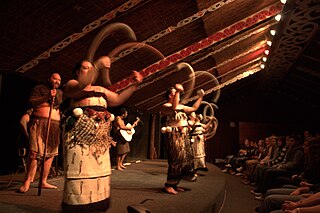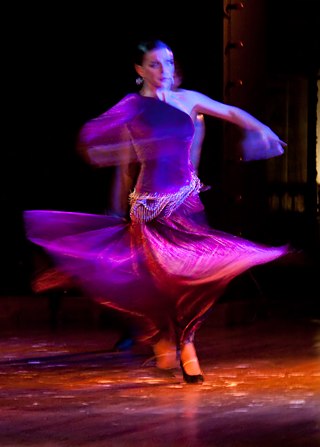
A kick is a physical strike using the leg, in unison usually with an area of the knee or lower using the foot, heel, tibia (shin), ball of the foot, blade of the foot, toes or knee. This type of attack is used frequently by hooved animals as well as humans in the context of stand-up fighting. Kicks play a significant role in many forms of martial arts, such as capoeira, kalaripayattu, karate, kickboxing, kung fu, MMA, Muay Thai, pankration, pradal serey, savate, sikaran, silat, taekwondo, vovinam, and Yaw-Yan. Kicks are a universal act of aggression among humans.

The kickflip is a skateboarding trick, in which the rider flips their skateboard 360° along the axis that extends from the nose to the tail of the deck. When the rider is regular footed the board spins counter-clockwise if viewed from the side.
Because ballet became formalized in France, a significant part of ballet terminology is in the French language.

A strike is a directed physical attack with either a part of the human body or with an inanimate object intended to cause blunt trauma or penetrating trauma upon an opponent.
Strikes can be offensive moves in professional wrestling, that can sometimes be used to set up an opponent for a hold or for a throw. There are a wide variety of strikes in pro wrestling, and many are known by several different names. Professional wrestlers frequently give their finishers new names. Occasionally, these names become popular and are used regardless of the wrestler performing the technique.
Trampolining terms are used to describe various positions and types of skill performed in the sport of trampolining.

The front kick in martial arts is a kick executed by lifting the knee straight forward, while keeping the foot and shin either hanging freely or pulled to the hip, and then straightening the leg in front of the practitioner and striking the target area. It is desirable to retract the leg immediately after delivering the kick, to avoid the opponent trying to grapple the leg and to return to stable fighting stance.

In martial arts and tricking, the 540 kick is a jump kick move. It involves a rotation of approximately 540 degrees.

A butterfly kick or horse kick is a jumping kick in martial arts such as modern wushu, taekwondo and capoeira. In certain changquan styles, this kick is known as Swallow Kick.

The tailwhip is a bike trick typically performed on a BMX, in which the frame of the bike performs a complete rotation around the front end, which remains stationary throughout the move. The same trick may also be performed on a kick scooter.

A roundhouse kick is a kick in which the practitioner lifts the knee while turning the supporting foot and body in a semicircular motion, extending the leg striking with the lower part of the shin and/or the instep. The ball of the foot can also be used to strike the target and is preferable when power breaking thick boards. This type of kick is utilized in many different martial arts and is popular in both non-contact and full-contact martial arts competitions. The kick has many variations based on stance, leg movement, striking surface, and the height of the kick.
A freestyle skateboarding trick is a trick performed with a skateboard while freestyle skateboarding. Some of these tricks are done in a stationary position, unlike many other skateboarding tricks. The keys to a good freestyle contest run are variety, difficulty, fluidity, and creativity. This is an incomplete list, which includes most notable tricks.
A flip trick is a type of skateboarding trick in which the skateboard rotates around its vertical axis, or its vertical axis and its horizontal axis simultaneously. The first flip trick, called a kickflip but originally known as a "magic flip", was invented by professional skateboarder Rodney Mullen.

Some poi tricks include: reels, weaves, fountains, crossovers and windmills.
The following is a glossary of figure skating terms, sorted alphabetically.

Mawashi geri (回し蹴り) can be translated as "spin kick", although it is also sometimes referred to as a roundhouse kick. It is a kick used in Japanese martial arts.

A shove-it is a skateboarding trick where the skateboarder makes the board spin 180 degrees without the tail of the board hitting the ground under their feet. There are many variations of the shove-it but they all follow the same principle: The skateboarder's lead foot remains in one spot, while the back foot performs the "shove". The pop shove-it was originally called a "Ty hop", named after Ty Page.

In dance and gymnastics, a turn is a rotation of the body about the vertical axis. It is usually a complete rotation of the body, although quarter (90°) and half (180°) turns are possible for some types of turns. Multiple, consecutive turns are typically named according to the number of 360° rotations.











